
11 minute read
THE GREEN STANDARD
Inequity Disrupts Sustainable Transportation Progress
By Josh Naramore
THESE ARE UNPRECEDENTED TIMES. The COVID-19 global pandemic has affected us all in varying ways, exacerbating long existing systemic racial and economic inequities. It’s vital to think about the future of mobility and the public realm with intentionality through the lens of equity.
A great starting place is developing a strategic framework to understand what needs exist and identify the role local agencies can play in addressing mobility challenges and inequities. There is a need for a bold commitment to equity and planning for mobility that broadens opportunity and targeting initiatives to communities that have been left out of economic growth.
Barriers to Mobility Equity
Pre-COVID, the City of Grand Rapids, Mich., was one of the fastest growing cities in the Midwest, but not all residents benefited from that prosperity. Residents have unequal access to safe, sustainable, and fast transportation options. This is not unique to Grand Rapids, but these disparities have only broadened during the pandemic, and addressing them requires a commitment to equity. Related to both economic opportunity and mobility, communities of color experience opportunity differently. While significant strides have been made in recent years in mobility related to parking, transit, transportation demand management (TDM), and safety, similar disparities exist. Vulnerable and historically marginalized communities of color experience disproportionately high levels of impact whether related to crashes or access to safe, affordable and efficient transportation options. In Grand Rapids, despite having a robust mobility network with 70 percent of residents living within a Mobility and economic development are quarter mile of transit, limited weekday and weekend evening service hours and headways leave many areas closely linked to equity. Communities need and individuals under-served by transit. Racial and safe, convenient, and affordable travel income disparities also persist in ownership of person-options for economic success. al vehicles. The city has added 85 miles of bikeways in the last seven years, but most of the city’s existing bicycle network is in mixed-traffic conditions and planned additions lack adequate funding for other treatments. A network that supports all users will require substantial investment in connected and protected bicycle facilities.
The city currently owns and operates 10,000 offstreet and 4,000 on-street metered, public parking spaces in the downtown and neighborhood commercial districts. There is a perception of undersupply of parking and this threatens efforts to better manage the parking system through interventions designed to facilitate greater availability of parking in these locations and to generate revenue for the maintenance and operation of parking and mobility facilities, programs, and services.
The value of the city’s significant parking investments and curbside infrastructure is significantly undermined by not pricing on-street parking at night and on weekends and by too-modest oversell rates for monthly parkers in garages. The lack of adequate parking regulation and the perception of a lack of capacity distract from other efforts to improving mobility and addressing inequities.
Community engagement often fails to include people who are unfamiliar with, unavailable to participate in, or wary of participating in community conversations. Transportation issues are primarily informed by those who are more inclined to participate or have a conduit to staff and decision-makers. The city’s emphasis on customer service and a culture of speed/ efficiency creates a reactive system that interrupts staff workflows and systems, perpetuates inefficiencies in resource utilization, and prioritizes the concerns of those who speak loudest and most often. This also creates an imbalance in how resources are delivered
for basic transportation services such as neighborhood traffic calming, pedestrian crossings, and street repairs.
Framework for Change
The Grand Rapids Economic Development and Mobile GR & Parking Service departments completed an Equitable Economic Development and Mobility Strategic Plan in January 2020. The process was led by a steering committee comprised of approximately 35 community partners and stakeholders, along with a consulting team, in collaboration with city staff. The consultants facilitated focus groups which engaged hundreds of additional stakeholders and community partners to test strategies.
The plan sets out the following objectives:
Align planning and capital investments to support economic development and promote equitable outcomes.
Increase TDM.
Management of on-street parking and curb space.
Invest in staff and system capacity to meet the mobility needs of all of Grand Rapids.
Develop an asset management approach that will support the long-term health of the city’s mobility networks.
Establish comprehensive communications, engagement, and education programs.
Cultivate and capitalize upon strategic partnerships to achieve the city’s equitable mobility goals.
Although the plan is established as a five-year plan, staff recognize the need to continually evaluate opportunities as conditions evolve and will update the Plan as necessary to respond to current conditions. The actions in the Plan will be tracked through metrics developed to evaluate progress and maintain accountability and transparency.
What’s Next?
COVID has impacted municipal budgets across the country and with increased demands for services and declining revenues, a clear, prioritized vision for investment is paramount. It is essential for local agencies to ensure that inclusive and

accessible mobility options exist and are maintained. The city’s plan helped us navigate recent budget cuts and still maintain funding for the near time priorities.
The COVID crisis also provides opportunity for experimentation and implementation that was previously thought to be difficult. With lower traffic volumes on major streets, it provided an opportunity to change traffic control and evaluate transitioning signalized intersections to all-way stops. Before COVID during one weekend, we deployed 25 temporary pick
800.241.8662 info@southlandprinting.com
NoNo MatterMatter Who’sWho’s onon thethe Ticket...Ticket... Southland WeWe CanCan PrintPrint It!It!







Every Ticket Imaginable
up/drop off zones. Pre-COVID, we had only a handful of parklets or outdoor dining areas permitted in on-street parking. We now have dozens of social zones across the city that repurpose parking and travel lanes for increased outdoor dining. All of these efforts were to help local businesses, but I hope they become part of the regular fabric of the city.
I witnessed what is possible when working so closely with the community. During I’m Often as professionals we are so focused on the work that we lose touch with the people that we serve. I’m hopeful that the tragedy and impact of COVID will serve as the impetus for the changes we desperately need. ◆
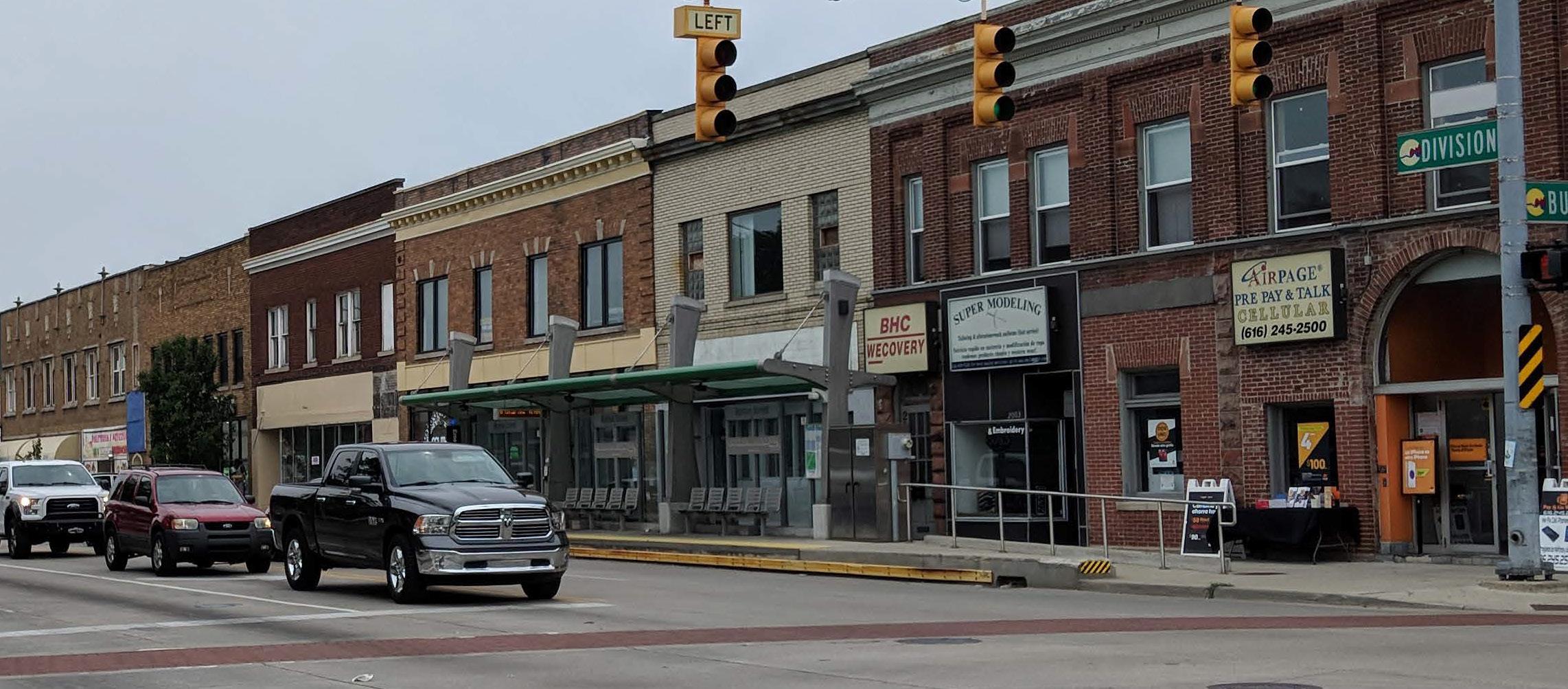
JOSH NARAMORE is mobile GR director at the City of Grand Rapids and co-chair of IPMI’s Sustainability Committee. He can be reached at jnaramore@grcity.us.
Priority Near-Term Mobility Strategies
1.
Implement a comprehensive communication strategy—Increase understanding and awareness of the resources available within the community and of the decisions that are being made on a regular basis about mobility systems. Educate to address the public perception about the lack of public parking.
2.
Pilot expanded Transportation Demand Management (TDM) incentive programs • Bikeshare and e-scooter share pilot (shared micromobility) • Low-income transit pass program • Carsharing operation
3.
Take a proactive and strategic approach to capital and safety investments, prioritizing projects that address safety and equity needs
4. Develop a parking expansion decision tool to guide on and off-street management
ELSAG® VPH900: The low-cost, automated parking management solution
ELSAG® Video Plate Hunter 900 (VPH900) is a highly effi cient, low-cost parking management solution. The ELSAG VPH900 analyzes video from select IP cameras to provide license plate data that allows lot owners and management companies to automate permit validation, lot/garage inventory, fee payment, enforcement, and bolster security systems. Let’s discuss which VPH900 software and IP camera bundle is right for your parking area environment so you can save time and money.
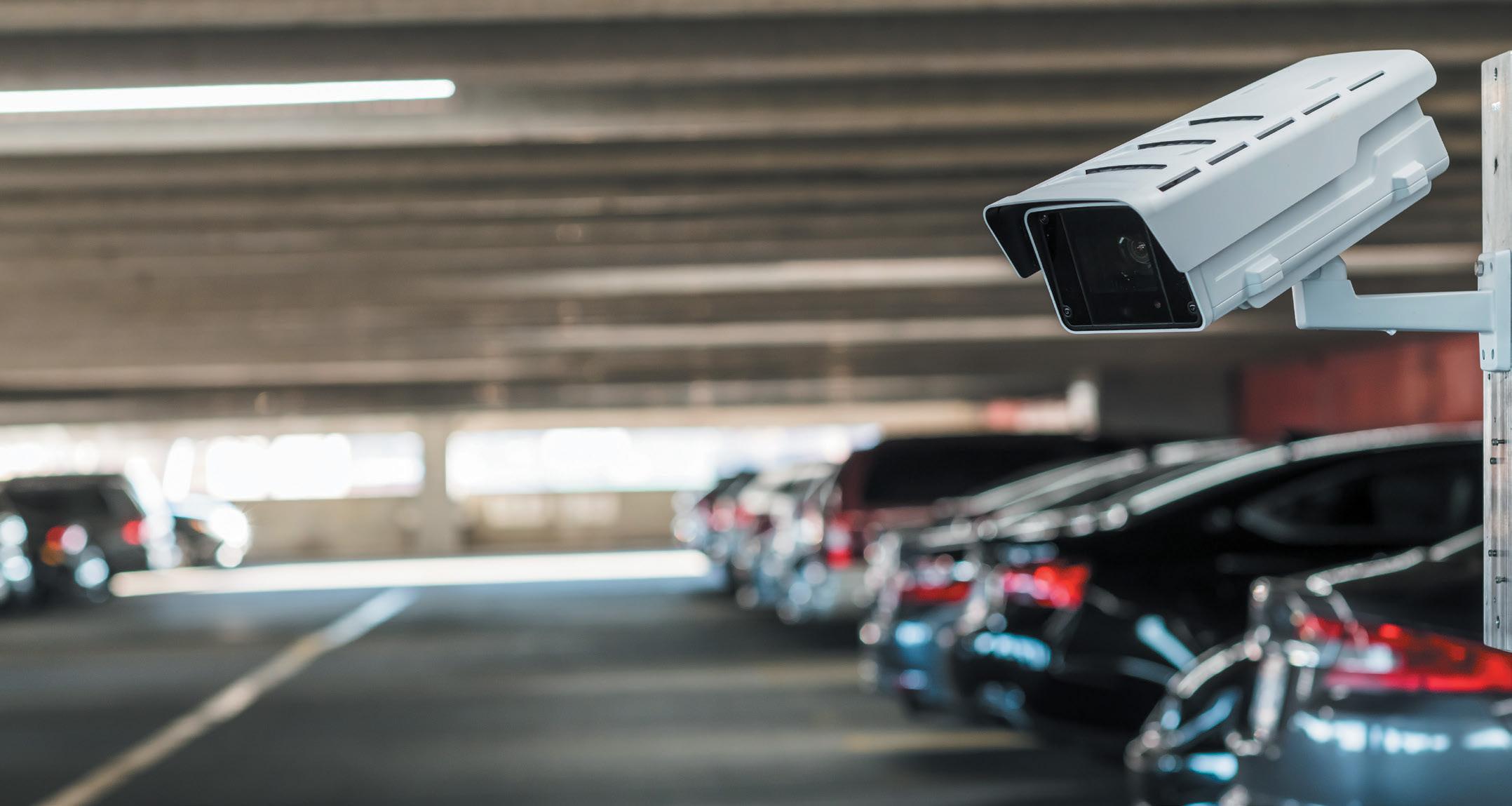
Made in the USA
leonardocompany-us.com
Helicopters | Aeronautics | Electronics, Defense & Security Systems | Space
Harnessing Data for Dynamic Curb Management
By Yifan Lu
MANY OF TODAY’S CURB-PRICING strategies rely on charging personally owned vehicles for short-term use of on-street parking in commercial areas. Parking revenues across cities declined after many cities and states declared stay-at-home orders to help fight COVID-19. In the early days of the pandemic in March and April, many restaurants and local businesses switched to pick-up-only models, which means would-be parkers would only be stopping by momentarily. Meanwhile, other uses of the curb continued at the same rate or even increased, such as on-demand food delivery and parcel delivery. However, these users are typically not charged for their use of curbside space.
The current situation under the pandemic highlights what city officials and transportation planners have been saying for years: Any change in demand for parking from private drivers--which prior to now might have been a switch to ride-hailing or autonomous vehicles--could reduce a key revenue source for cities. Instead of just pricing one user of the curb, the focus must be on strategies to ensure that all curb users pay a fair price for their use of public space. As more people continue to work from home and fewer people go out to commercial districts, cities will likely continue to see a hit to their municipal budgets, so there is more of a necessity to move this debate from theory into practice. With those shrinking budgets, there is also an imperative to make the transition in a cost-effective way.
Paying for the Curb
Different strategies have been debated for how to monitor and properly price the use of the curb by Uber, Lyft, on-demand delivery, food/beverage delivery, and parcel delivery services. Parking payment applications have become an increasingly popular way to pay for metered parking, and they could similarly be used by delivery drivers to reserve and pay for the use of the curb. However, adding new apps as another distraction for drivers may prove difficult and is also tricky to enforce, especially for users of the curb such as Uber, Lyft, and on-demand delivery drivers who may only stop in the space briefly before departing.
Cameras and other sensors could also be used to monitor space and record parking events. Billing from these systems could be difficult, though. Who should
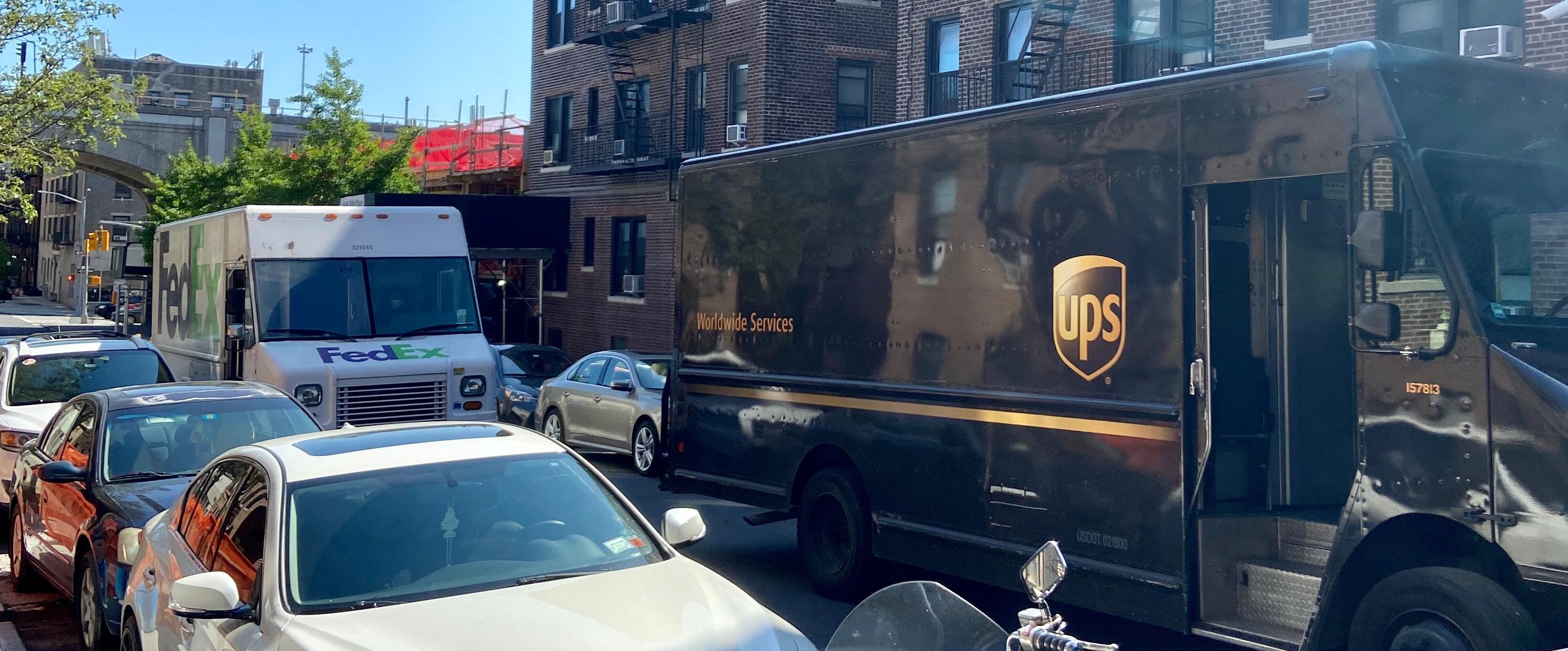

be billed? The ride-hailing driver or Uber or Lyft directly? Without an accurate database of license plates of the vehicles used by those drivers, it might not be possible to bill the companies directly. These sensors can also be more expensive to install and maintain, hindering cities’ ability to deploy commercial loading more widely throughout the city.
The good news is that we don’t need extensive new technology to understand how commercial vehicles use this public space. Most commercial fleets already track where their vehicles are, either using the GPS from smartphones or a more comprehensive fleet-management system connected to the vehicle. A small subset of that data can easily be leveraged to help inform where commercial loading zones would be most effective in reducing double-parking and ensuring delivery workers can park close to their delivery points, which would be better overall for efficiency and worker health and safety.
This parking event data could be used to invoice companies for the use of space, as car-sharing operators have done in both Seattle and Oakland and which many cities are already implementing for micromobility services (shared bikes, scooters, and mopeds). With GPS-based data, cities could properly charge for commercial loading space throughout the city, and make more dynamic, data-driven decisions based on changing supply, demand, and transportation patterns. Operators would benefit from having more dedicated space, reducing the instances of double-parking and its associated fines, without needing to reveal more data than would be captured through a camera or sensor (i.e., a vehicle ID, location and duration of stay). It is no longer a debate about whether commercial users will be asked to pay for their use of public space, but how; data-sharing partnerships could be the most cost-effective and painless way to move forward while also helping operators advocate for better load zone planning and achieve mutual goals for safer and more efficient cities. ◆
This article was co-authored with Rodney Stiles and Regina Clewlow.
YIFAN LU runs strategic partnerships for Populus Technologies. She can be reached at yifan@populus.ai.
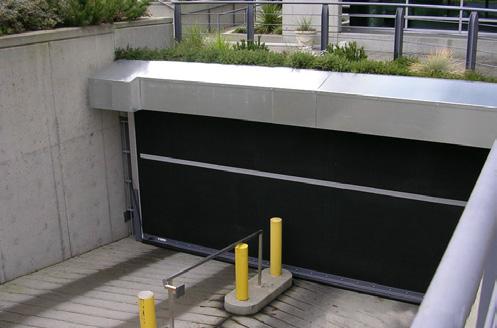

High Speed, High Cycle, Impactable Door Systems for Parking Garage Applications
TNR Rubber Roll-up Doors are ideal for Urban Environments Fits as little as 13 inches headroom!
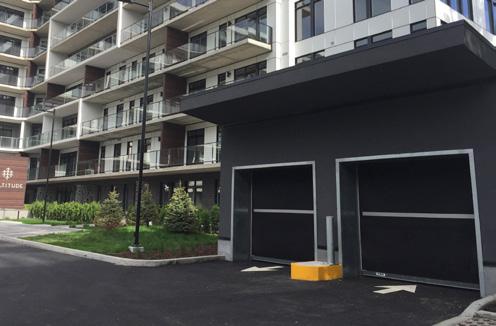
• Takes a vehicle Impact and Easily Resets • Parking Garages, Condominiums, Office Towers • Access Control options to suit all applications • Limited Lifetime Warranty








